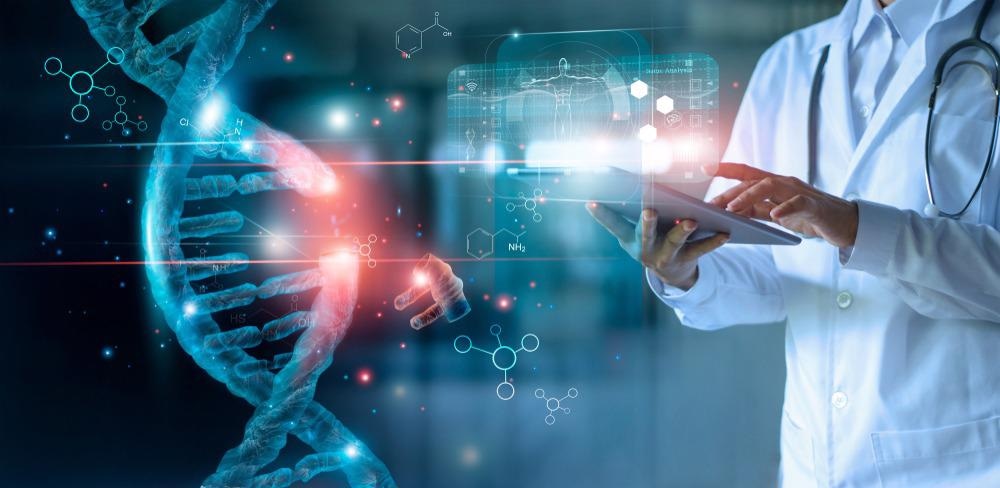By harnessing the cellular and biomolecular processes of an organism, researchers can develop biotechnological tools such as the infamous CRISPR-Cas system. Tools such as these can be used in genetic engineering, an area of biotechnology, to directly manipulate or modify the genome of an organism such that it possesses the desired phenotype.

Image Credit: PopTika/Shutterstock.com
Biotechnological Tools as Old as Bread
The application of tools derived from living organisms is a practice dating as far back as the Mesopotamian people. More than 7,000 years ago, civilizations were fermenting yeast with grape juice to produce wine, a drink with hedonic and preservative properties. Some 3,000 years later, Egyptians began using yeast to make their bread. Though yeast was recognized as playing a role in fermentation, the process was not understood.
It took roughly 3,000 more years before the work of Antonie Van Leeuwenhoeck and Louis Pasteur revealed the role of yeast in fermentation. Writing in the 17th century, Leeuwenhoeck described the first observation of yeast “globules” under a microscope. Building on this, in the 19th century Pasteur established the groundwork of processes involved in alcoholic fermentation.
Beyond elucidating its role in fermentation, food-grade yeast (Saccharomyces cerevisiae) has long been studied for its applications in biological research. In 1996, S. cerevisiae was the first eukaryotic organism to have its whole genome sequenced, establishing it as a fundamental model organism. To date, yeast remains a popular biotechnological tool for studying human genetics and health.
A Tool for Genetic Engineering
In addition to harnessing the innate processes of yeast, biotechnology can utilize genetic engineering to create transgenic organisms with applications in the biosynthesis of various products. While different species of yeast have specific applications in biotechnology, S. Cerevisiae is the most widely used cell “factory” for the production of biofuels, biocontrol agents, probiotics, flavoring agents, and various other products.
By modifying the genome of yeast, researchers can develop biosynthetic factories that produce desired products. The clustered regularly interspaced short palindromic repeat (CRISPR)-Cas system is popular biotechnology derived from prokaryotic adaptive immune systems, with various applications in genome editing. Readily programmed for targeting, the CRISPR-Cas system contains a guide RNA that is easy to design and express in the host.
Complementary base pairing of this guide RNA to DNA, as well as the presence of upstream protospacer adjustment motif, directs CRISPR accessory protein to target sites in the genome.
The Cooperation Between CRISPR Systems and Synthetic Biology
The CRISPR-Cas system has helped to revolutionize the field of genetic engineering beyond directly manipulating the genomic sequence. This biotechnological tool efficiently targets genes to modulate their activity. By enabling activation and repression of gene transcription in yeast, the CRISPR system can be utilized to carry accessory proteins with desired functions to target sites in the genome.
By constructing a catalytically deactivated Cas9 (dCas9), CRISPR systems can be used to modulate gene expression. As part of interference systems, CRISPR/dCas9 inhibits transcription by binding to target genes or promoters and preventing RNA polymerase binding. To upregulate select genes, dCas9 can be fused to transcriptional activators or activation domains.
Fusing dCas9 with various effectors can enable precise genome regulation. Without altering the genetic sequence of its host, this tool could improve crop production. In plants, the CRISPR/dCas9 system has been used to enhance stress tolerance, improve immunity against RNA viruses and regulate metabolites critical to growth and development. In this way, bioengineering can be used to enhance the desirable characteristics of an organism.

Image Credit: Meletios Verras/Shutterstock.com
Applications of Bioengineering
Developed by either directly editing the genome or altering the expression of genes, bioengineered organisms are becoming increasingly prevalent in agriculture. In response to this, the U.S Department of Agriculture expanded its regulation of bioengineered foods in 2016. Alongside this, the Standard defined the new term for bioengineered foods as “those that contain detectable genetic material that has been modified through certain lab techniques and cannot be created through conventional breeding or found in nature”.
While the potential applications of CRISPR/dCas9 systems are still being explored, it is clear this could be a powerful tool to support plant genome engineering. However, putting this tool into practice is still often limited by a concern of the public; namely the possible hazards due to the consumption of crops that have been engineered.
To ensure proper and adequate regulations of these foods, the U.S Agricultural Marketing Service compiled a list of crops or foods are available in a bioengineered form, as well as guidance on testing methods and validation for detecting modified genetic material.
Sources:
- Walker RSK, Pretorius IS. Applications of Yeast Synthetic Biology Geared towards the Production of Biopharmaceuticals. Genes (Basel). 2018;9(7):340. Published 2018 Jul 6. doi:10.3390/genes9070340
- Pretorius IS. Solving yeast jigsaw puzzles over a glass of wine: Synthetic genome engineering pioneers new possibilities for wine yeast research. EMBO Rep. 2017;18(11):1875-1884. doi:10.15252/embr.201745231
- Using yeast in biology. [Online] Your Genome. Available at: https://www.yourgenome.org/stories/using-yeast-in-biology (Accessed on 15 December 2021)
- Ding W, Zhang Y, Shi S. Development and Application of CRISPR/Cas in Microbial Biotechnology. Front Bioeng Biotechnol. 2020;8:711. Published 2020 Jun 30. doi:10.3389/fbioe.2020.00711
- Karlson CKS, Mohd-Noor SN, Nolte N, Tan BC. CRISPR/dCas9-Based Systems: Mechanisms and Applications in Plant Sciences. Plants. 2021; 10(10):2055. https://doi.org/10.3390/plants10102055
- The history of yeast…[Online] Explore yeast. Available at: https://www.exploreyeast.com/article/the-history-of-yeast (Accessed on 15 December 2021)
- List of Bioengineered Foods. [Online] Agricultural Marketing Service. Available at: https://www.ams.usda.gov/rules-regulations/be/bioengineered-foods-list (Accessed on 15 December 2021)
Further Reading